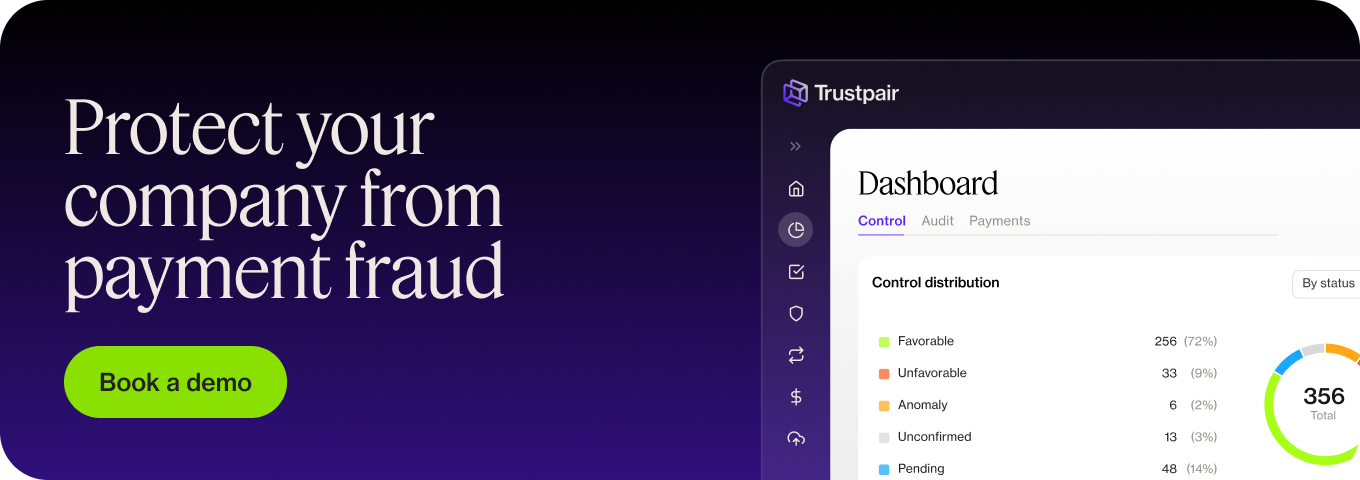In this online world the consequences of fraud cannot be overestimated. Exposure to it can, however, be reduced in companies with the right education, systems, and practices. Fraud can come from external or internal forces. With Internal fraud, also known as occupational fraud, the perpetrator is an employee of the organisation in question. External fraud is committed against an organisation by outside perpetrators, sometimes with the help of employees.
The PwC Global Economic Crime and Fraud Survey 2020 found that around 40% of fraud comes from external perpetrators, with around another 20% from collusion between internal and external forces. With the total cost of fraud for the 5,000 companies that took part in the survey globally adding up to USD 42 billion over the 24 months prior to the survey, this is a huge amount of money. And that is before reputational costs and loss of future earnings are considered.
External fraud is big business and a large risk factor for companies.
Examples of external fraud
There are various scams and schemes that organisations can fall victim to. For example:
- False, inflated, and duplicated invoices: these can come from existing suppliers or contractors.
- Spamming, spoofing, and phishing: fraudsters gather information through spamming (unsolicited messages), spoofing (emails impersonating individuals or organisations) and phishing (apparently legitimate emails requesting sensitive information). This information can then be used to make seemingly legitimate requests for funds that are then paid to fraudulent accounts. With CEO fraud scammers take over the email accounts of senior executives and request large payments that, again, seem legitimate.
- Ransomware and malware: fraudsters can take control of files, databases or other sensitive information and sell it to other parties or hold it to ransom.
As the PwC Survey notes: “Some frauds – such as external frauds – generally strike from outside the company, are transactional in nature, lend themselves to active monitoring, and when managed properly may reduce financial impact”.
Best practice for protection against external fraud
As with many things, prevention is better than the cure. Organisations that audit their practices and procedures regularly, establish and correct any weaknesses they find will be more secure than those that do not. It pays to be prepared: the PwC survey found that “companies that have a dedicated fraud programme in place generally spent less (relative to revenue) on response, remediation and fines”.
Educating employees
As technology evolves so do the means of obtaining money and information. Employees should be aware of all the techniques and scams and how to spot them. They should also be made aware of the best ways in which to report any suspicious activity.
Maintaining robust processes
Audits should be performed regularly and with sufficient detail to detect any anomalies. The sooner fraud is found the less expensive it will be in the long run. There should be strict processes for the movement of funds and clear segregation of duties. This will protect against both internal fraud and the opportunity for collusion with outside parties. All payment details and any changes should be verified independently, especially when they are requested by email.
Managing risk at all stages
It is important for companies to ensure they are dealing with who they think they are. Doing the due diligence to know your business is vital to avoid organisations unknowingly dealing with third parties that are involved in money-laundering or terrorist activities.
Protecting your company against external fraud with the right software
As the leading French company in the field of fraud prevention and detection, Trustpair can offer software solutions to help win the fight against external (and internal) fraud. Our systems provide automated processes that reduce third-party wire transfer fraud risk and add three extra steps to the procure-to-pay (P2P) process to make it more secure.
Our Bank Supplier Check software will analyse, monitor, and verify the bank details and company ID of third parties, reducing the risk of third-party wire transfer fraud. Our Vendor Master File Management software allows for systematic checking and continual verification of third-party bank details to avoid the usual degradation that occurs over time and as they move through departments.
Our software platform is intuitive and simple to understand. What is more, it can be deployed in less than a day as a web-app, or directly integrated into your business environnement. It gives peace of mind and frees up employees to focus on less time-consuming tasks that are more valuable to the business. It also reduces the risk of human error and exposure to corruption or bribery and provides a more tangible picture of anomalies and fraud risk.
If you would like any further information about how Trustpair can help your company reduce the risk of wire transfer fraud, please get in touch. We would love to arrange a demo with you to show you how we can help.
Key Takeaways:
- External fraud is committed against organisations and can be extremely costly
- Prevention and early detection are key
- Trustpair software will give extra security and peace of mind

